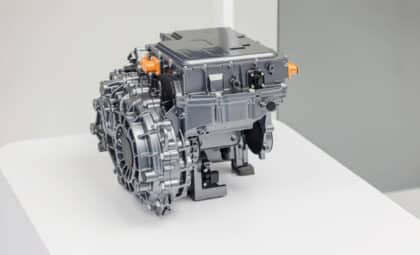
Moving to a new state is exciting, but it’s also one big stress fest. Even after you’ve hunted down your new home and routed out your itinerary to get there, you still have to deal with actually getting there.
Add in the fact that different states have different requirements when it comes to car-related logistics like registration, and you could be facing a full-on migraine.
Which is exactly why we pulled together a checklist for those in the throes of moving to a whole new state. This way, you can spend your time and energy focusing on what matters: getting there safely. (And picking out a fresh, new welcome mat!)
If you’re making a seriously long move — say, from New York to Los Angeles — the mere idea of the drive might leave you exhausted. If you’d rather fly out, you can arrange professional car shipping, which will save you not only the drive but also the additional wear and tear on your vehicle. Of course, you’ll pay for saving yourself the mileage: one nationwide hauler estimated a bill of about $1,200 for a one-way, cross-country move for a compact 4-door sedan.
One thing to keep in mind: Your auto insurance may not cover transporting the vehicle. Make sure to ask both the company you choose and your current provider what protections are in place.
2. DIYing the move? Keep your stuff safe if you’re staying overnight.
Moving your stuff under your own power, with the help of a rental truck from a company like Penske or Uhaul, is a popular way to save money on what can become a very expensive project. Some experts estimate the average cost of a long-distance move at almost $5,000.

But if your move is long-distance enough that you’ll need to stop and stay along the way, you might be nervous about leaving a whole house worth of furnishings in your rental truck. After all, a locked Uhaul in a hotel parking lot makes a pretty conspicuous (and tempting) beacon for thieves.
While there’s no way to mitigate the risks of this kind of situation entirely, you can take some steps to make yourself less of a target. For instance, choose a hotel with well-lit parking, accommodations in a safe neighborhood, and keep the truck as close to your room as possible. That way, it’ll be easier to hear a potential intruder meddling with your padlock, or to steal a glance out the window and to make sure everything’s OK.
Backing up to a wall can also be a simple but effective way to make it harder for a burglar to access your stuff. And, of course, utilize the padlocks and chains that are offered by rental van companies to your benefit. It’s not perfect, but it does add an extra layer of time and effort for a thief to take your things.
3. Check out your new state’s auto insurance requirements — and update your policy if necessary.
While having some sort of auto insurance coverage is almost always necessitated by law, each state has its own bare minimum coverage requirements. And that means that, depending on your current auto insurance policy, your premiums may go up or down if you have to purchase additional coverages (or if you can choose to let some fall off).
Of course, finding the cheapest car insurance that meets your needs almost always requires some shopping around, which does add another item to your to-do list. And the cost of policies can vary wildly from state to state — for instance, Michigan motorists pay almost 70 percent more than other U.S. citizens on average!
But think about it this way: Shopping for the cheapest car insurance is an opportunity to find ways to save money in the long term. And chances are that when you’re moving, you could use a few extra cents.
4. Welcome to your new home! First stop: DMV.
We get it: a trip to the DMV is precisely no one’s idea of a fun diversion.
But making sure your vehicle is street legal in your new home is imperative… and since many state laws carry tight registration deadlines, it behooves you to do it as quickly as possible.
Each state has its own regulations when it comes to transferring your registration, but generally, you’ll be expected to get your new plates within 30 days of your move. In many cases, you’ll be required to get your new state driver’s license before you can do so, which requires having documentation to prove your residence at your new address.
These documents may include a utility bill or mail sent from a financial institution, but the point is, you’ll need to spend time gathering them… which, again, means you want to make sure you don’t procrastinate.
You’ll also be able to update your voter’s registration at the DMV, which may be an important part of establishing residency in your new home state.
5. Take a moment to think about your title.
If you own your car outright, you’ll need to transfer the title to your new state of residence — which can also be done during your trip to the DMV. (Hey, it’s a lot of stuff at once, but at least you won’t have to go back multiple times!)
If, however, your car is financed through a lender, you may face some additional obstacles since the title isn’t in your hands. While most major, nationwide lenders will allow you to move the car as long as you notify the company and maintain the bare minimum insurance coverage, smaller lenders may void your contract if you move out of state, which would require you to refinance the loan.
This article was contributed by Mark Fitzpatrick from ValuePenguin.
The News Wheel is a digital auto magazine providing readers with a fresh perspective on the latest car news. We’re located in the heart of America (Dayton, Ohio) and our goal is to deliver an entertaining and informative perspective on what’s trending in the automotive world. See more articles from The News Wheel.











